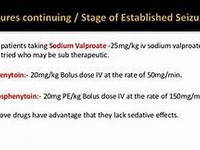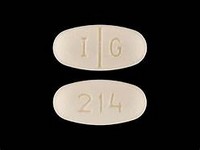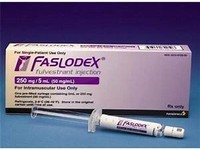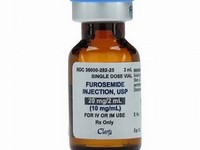haloperidol

haloperidol
CLINICAL USE
Sedative in severe anxiety Intractable hiccup Motor tics Nausea and vomiting Schizophrenia and other psychoses
DOSE IN NORMAL RENAL FUNCTION
Anxiety: 0.5 mg twice daily Hiccup: 1.5 mg 3 times daily Nausea and vomiting: maximum 10 mg/ day in divided doses; SC infusion: 2.5–10 mg dailySchizophrenia: Oral: 1.5–5 mg 2–3 times daily, up to 30 mg daily in resistant casesIM/IV: 2–10 mg initially then every 4–8 hours; maximum 18 mg dailyDeep IM: 50–300 mg every 4 weeks; higher doses may sometimes be requiredMotor tics: 0.5–1.5 mg 3 times daily, increased according to response
PHARMACOKINETICS
Molecular weight :375.9 %Protein binding :92 %Excreted unchanged in urine : 1 Volume of distribution (L/kg) :14–21half-life – normal/ESRD (hrs) :12–38/– DOSE IN RENAL IMPAIRMENT
GFR (mL/MIN)
20 to 50 : Dose as in normal renal function 10 to 20 : Dose as in normal renal function <10 : Start with lower doses. For single doses use 100% of normal dose. Accumulation with repeated dosage DOSE IN PATIENTS UNDERGOING RENAL REPLACEMENT THERAPIES
CAPD :Not dialysed. Dose as in GFR <10 mL/min HD :Not dialysed. Dose as in GFR <10 mL/min HDF/high flux :Not dialysed. Dose as in GFR <10 mL/minCAV/VVHD :Not dialysed. Dose as in normal renal function IMPORTANT DRUG INTERACTIONS
Potentially hazardous interactions with other drugs Anaesthetics: enhanced hypotensive effectsAnalgesics: increased risk of convulsions with tramadol; enhanced hypotensive and sedative effects with opioids; possibly severe drowsiness with indometacinAnti-arrhythmics: increased risk of ventricular arrhythmias with anti-arrhythmics that prolong the QT interval; increased risk of ventricular arrhythmias with amiodarone – avoid concomitant useAntibacterials: increased risk of ventricular arrhythmias with moxifloxacin – avoid concomitant use; concentration reduced by rifampicinAntidepressants: concentration increased by fluoxetine and venlafaxine; concentration of tricyclics increasedAnti-epileptics: metabolism increased by carbamazepine, primidone and phenobarbital; lowered seizure thresholdAntimalarials: avoid concomitant use with artemether/lumefantrineAntipsychotics: avoid concomitant use of depot formulations with clozapine (cannot be withdrawn quickly if neutropenia occurs)Antivirals: concentration possibly increased with ritonavirAnxiolytics and hypnotics: increased sedative effects; concentration increased by buspironeAtomoxetine: increased risk of ventricular arrhythmias Lithium: increased risk of extrapyramidal side effects and possibly neurotoxicity Pentamidine: increased risk of ventricular arrhythmiasSibutramine: increased risk of CNS toxicity – avoid concomitant use ADMINISTRATION
Reconstition
– Route
Oral, IM or IV (slow bolus) Rate of Administration
–Comments
– OTHER INFORMATION
May cause hypotension and excessive sedationIncreased CNS sensitivity in renally impaired patients – start with small doses; metabolites may accumulateEquivalent IV/IM dose = 40% of oral dose .
See how to identify renal failure stages according to GFR calculation
See how to diagnose irreversible renal disease
Home









